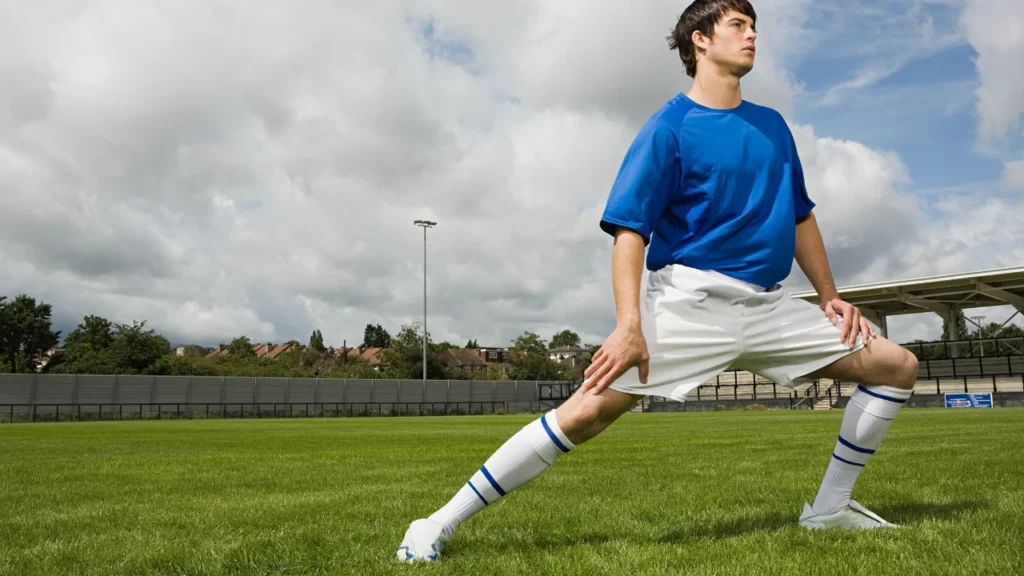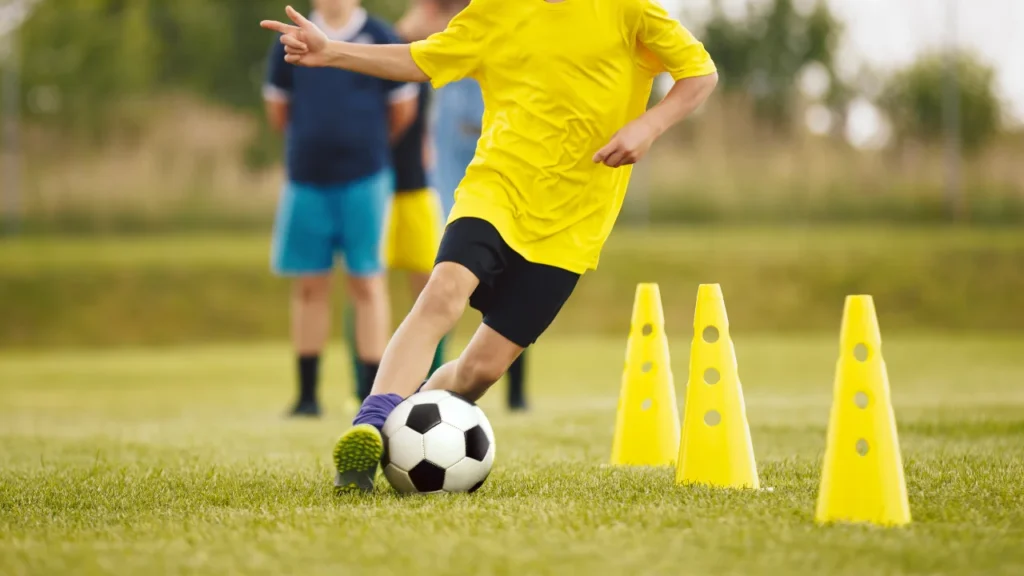The first part of every training session or get-ready for a challenge is a warm-up. All of an athlete’s muscles and body parts are slowly and methodically worked out during the warm-up, which gets them ready for training and competition. In addition to getting the athlete emotionally ready, warming up is also good for their bodies in a number of ways.
Football is a game that requires a lot of physical effort. You can’t say enough good things about warming up before you work out. A warm-up gets the heart rate up and gets the muscles, nervous system, tendons, ligaments, and cardiovascular system ready for the stretches and movements that are coming up. Increasing muscle flexibility makes it much less likely that you will get hurt. From the start, every player must always be ready and able to give it their all.
There are three different ways to warm up
Passive warm-up, the body’s temperature is raised by massaging, heating pads, steam baths, or hot showers. Passive warm-up may help athletes who have trouble moving around.
General warm-up, you move your big muscle groups in ways that may or may not have anything to do with the action you’re about to do, like jogging.
Specific warm-up, focuses on the body positions that will be used in the next activity and acts like that activity, like moving the leg like you’re shooting.
- Raise body temperature
- Increases metabolic rate
- Increases heart and respiratory rate
- Prepares the muscles and nervous system for exercise
The warm-up is just right for the next exercise. To get the heart, lungs, and metabolism working faster, warm-ups include physical movement that builds up to more intense movement. It takes at least 25 minutes to warm up, and it comes right before the training or tournament. It’s also good to warm up with your team. This makes the player feel like they fit on the team even more. The following basic steps and parts will make up a warm-up time.
Read More: How to play football for beginners?
| Activity | Purpose | Time (minimum) |
| Slow aerobic run | Heat muscles | 5 minutes |
| Stretching | Increase range of movement | 10 minutes |
| Football Drills | Coordination preparation for training/competition | 10 minutes |
Running

Running is the first workout that athletes do every day. Athletes start by running slowly for three to five minutes to warm up. This moves the blood through all the muscles, which makes them more flexible for stretching. The runners start out slowly and then slowly pick up speed until they reach the end. However, by the end of the run, they haven’t even reached half of their best effort.
Remember that the only goal of this part of the warm-up is to get the blood moving and the muscles warm so that you are ready for more intense exercise.
Stretching

Athletes must stretch as part of their warm-up and to improve their efficiency. A muscle that can bend more easily is stronger and better for you. Muscles that are stronger and healthier react better to activities and exercise, and they also help keep athletes from getting hurt. For more detailed information, please look at the Stretching information in this part.
All of your muscles should be warmed up, but in football, the groin, hamstring, thigh, calf, and achilles are the most significant. Players are told to take their time and get used to stretches. Athletics people can get hurt by quick, sharp moves. It’s also important to keep your breathing steady while you stretch. Take deep breaths in through your nose and out through your mouth.
Read More: Do cardio before or after lifting weights?
Football Drills

Drills are steps in the learning process that begin with low skill levels, move on to middle levels, and end with high skill levels. Motivate each athlete to reach the best level they can.
Kinesthetic actions are strengthened by doing a small part of the skill over and over again. Most of the time, the movements are sped up to make the muscles that do the skill stronger. Every coaching lesson should take the athlete through the whole progression, so they learn all the skills that go into an event as a whole.
Sample Warm-Up Routine
| Easy Aerobic Run |
| Flexibility Stretches |
| Triceps Stretch |
| Side Stretch |
| Groin Stretch |
| Supine Hamstring Stretch |
| Hamstring Stretch |
| Seated Saddle Stretch |
| Hurdler’s Stretch/Reverse |
| Quad Stretch |
| Abdominal Stretch |
| Toe Pointers |
| Mobility Stretches |
| Forward-&-Back Leg Swings |
| Side Swings |
| Lunges |
| Rhythm Drills |
| Easy Skipping |
| High Knees |
| High Skipping |
| Jogging Butt Kicks |
| Skipping Kicks |









Comments are closed.